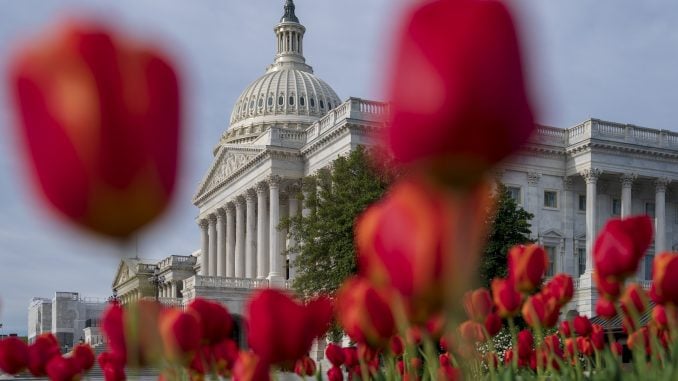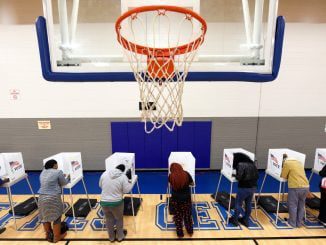
SEATTLE — Some federal lawmakers are making a renewed push to ban high-capacity magazines. Nine states have passed laws restricting magazine capacity to 10 to 15 rounds, and the Democratic-led U.S. House plans to consider a similar ban at the federal level in the coming weeks.
Las Vegas gunman Stephen Paddock had an arsenal of high-powered rifles along with his large-capacity magazines and bump stocks — now-banned devices that attach to a gun to make it fire bullets more rapidly. The Trump administration banned bump stocks after that massacre, but the high-capacity magazines that smoothly fed hundreds of bullets into Paddock’s rifles remain legal.
“We know from video evidence that he was firing about 10 rounds per second,” said Louis Klarevas, a research professor at Teachers College, Columbia University. “The reason he was able to do that was he had a combination of assault rifles with bump stocks and large-capacity magazines. Imagine if he only had 10-round magazines. He would only have shot 10 rounds at a time.”
The Keep Americans Safe Act will soon be debated in the House Judiciary Committee. It would prohibit the transfer, importation or possession of magazines that hold more than 10 rounds of ammunition. The bill is co-sponsored by three Democratic members of Congress whose states suffered mass shooting involving these magazines: Ted Deutch of Florida, Diana DeGette of Colorado and Dina Titus of Nevada.
“There is only one purpose for a high-capacity magazine: to maximize human casualties and allow gunmen to fire more rounds of ammunition at a time without reloading,” Deutch said in a statement. “But those precious seconds it takes to reload can mean saving countless lives.”
Firearm magazines are not regulated by federal law, but some states have set limits on their sizes. They include California, Colorado, Connecticut, Hawaii, Maryland, Massachusetts, New Jersey, New York, Vermont and Washington D.C.
Federal legislation is expected to face deep resistance in the Republican-led Senate and from the National Rifle Association. Critics point out that there are millions of high-capacity magazines in circulation, limiting the effectiveness of a ban.
Alan Gottlieb, with the Bellevue, Washington-based Second Amendment Foundation, said large-capacity magazines are important for self-defense and can help when there are multiple attackers in a home.
“Plus, it only takes one second to switch out one magazine for another,” he said. “There are lots of videos on how easy it is to do that.”
The advocacy group Everytown For Gun Safety’s study of mass shootings between 2009 and 2017 found that 58 percent involved firearms with high-capacity magazines. The study looked at shootings where the magazine capacity was known and where at least four people were killed, not including the shooter.
The cases included the Aurora, Colorado, movie theater killings in which the gunman used a 100-round magazine drum, killing 12 and injuring 70. The gunman who killed 77 people at a youth camp and in Oslo, Norway, in 2011 purchased his 30-round magazines from the U.S., according to his manifesto. The 19-year-old man who killed 17 students and staff at Marjory Stoneman Douglas High School last year also carried high-capacity magazines, according to the official Public Safety Commission report released in January that said police recovered eight 30- and 40-round magazines from the scene.
The advocacy group Sandy Hook Promise has been running a promotion on Twitter asking people to sign a petition in support of the passage of the Keep Americans Safe Act, the measure being debated Wednesday. The tweets say the man who killed dozens at Sandy Hook Elementary School in 2012 used a 30-round magazine and 11 children were able to escape when he stopped to reload.
The military-style firearms used in many mass shootings in the U.S. can be fired rapidly, but “the limitation to the carnage is the capacity of the magazine,” said David Chipman, a former agent with the Bureau of Alcohol, Tobacco, Firearms and Explosives who works as a policy adviser at Giffords: Courage to Fight Gun Violence.
Others have argued that if the shooter only has smaller-sized magazines, they’ll just carry more guns or extra magazines.



